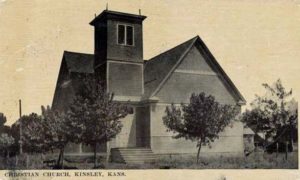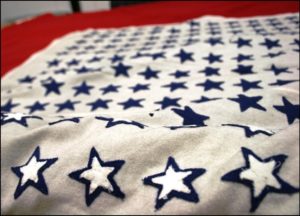
The local newspapers printed the Easter services’ orders of worship before and after Easter Sunday, March 31, 1918. The one I found most interesting was the Easter sunrise service at the Christian Church in Kinsley (April 4, 1918, Kinsley Graphic). The war certainly changed the content of this church’s worship service.
“At six-thirty Sunday morning we gathered in His name, and realized that another resurrection day had dawned. The old, old story awakened in us the hope of the sorrowing ages, and stirs anew the pulse of life. All things spoke gladness, as softly the breeze fans gently against our cheek, and the bright sunlight tells us that this was Easter Sunday morning, the day our Lord gave back to mankind life, “listen comes the pealing bells ‘there is not death’ all is love and life.”
The theme for the morning was “service”. Miss Ollie May McCormick spoke about the individual life to the young people. A little research revealed that Miss McCormick of Wichita, at age 23, became the youngest state organizer for the Women’s Christian Temperance Union. At age 25, she made a 3-day visit to Kinsley and spoke at a high school assembly, at boys’ and girls’ meetings and to the Mother’s Club. She is described as “a wonderful speaker and dramatic reader.”
The article goes on to say:
“A double flag service was presided over by the Boy Scouts, wherein Miss Forest Slater gave the Cross story, followed by Miss Blanche Manuel on ‘Our Flag.’” (Miss Slater and Miss Manuel were local teenagers.)
“Dr. P.A. Pearson in well-chosen words gave the history of the Red Cross and presented the flag.
Service, was the key word of Col. F.D. West’s message when the service flag was unfurled. And the following boys had been given to serve their country: George A. Goodwin, Harvey Lancaster, Andrew Barbee, Estell Penticuff, Earl Humphres and yesterday morning another of our boys, Ivan Reeder, entered the service. One by one the stars will be added our flag.”
In my other reading and research I found that the school and other churches also had service flags where a star was sewn on for each man that went in the military. I wonder what happened to those service flags? I only found three pictures of these organizational service flags on the internet. The one below was created at the University of Texas which accounts for the large number of stars.

